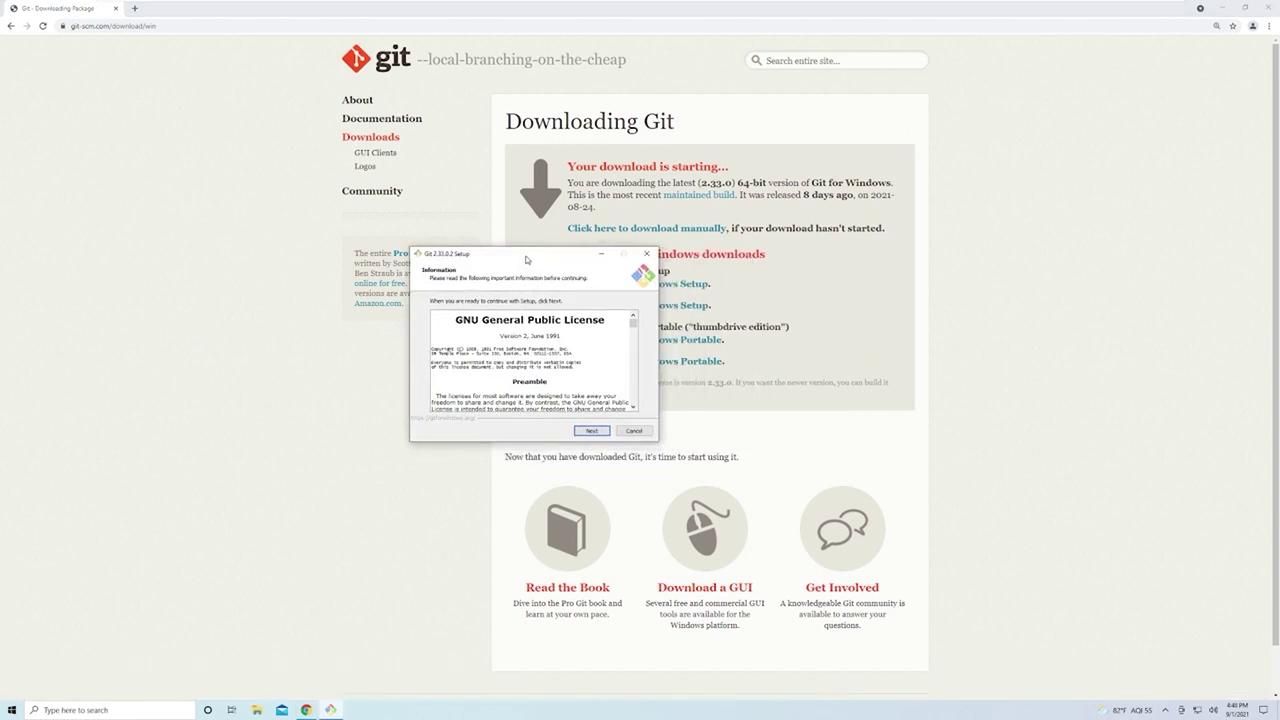Python API Development with FastAPI
Deployment
Setup Git
In this lesson, you'll learn how to configure Git for your projects—enabling change tracking and establishing a remote repository for code storage. This process not only simplifies deployment but also enhances collaboration within your team.
Below is an example FastAPI application used in our project. Although this code snippet isn’t directly related to Git setup, it provides context for what will be version controlled.
from fastapi import FastAPI
from fastapi.middleware.cors import CORSMiddleware
app = FastAPI()
origins = ["*"]
app.add_middleware(
CORSMiddleware,
allow_origins=origins,
allow_credentials=True,
allow_methods=["*"],
allow_headers=["*"],
)
# Including routers for posts, users, authentication, and votes
app.include_router(post.router)
app.include_router(user.router)
app.include_router(auth.router)
app.include_router(vote.router)
@app.get("/")
def root():
return {"message": "Hello World"}
Before setting up Git, consider these preliminary steps: by default, Git tracks all files in your project. However, you might not want to include files such as sensitive environment variables, cache directories (e.g., __pycache__), or your virtual environment folder (commonly named venv). To avoid tracking these files, create a .gitignore file in your project's root folder (be sure to include the leading dot).
Within the .gitignore file, add entries similar to the following:
.env(for your environment variables)__pycache__/- Your virtual environment folder (e.g.,
venv)
Next, capture the current state of your project’s dependencies by running:
(venv) C:\Users\sanje\Documents\Courses\fastapi> pip freeze
This command lists all installed packages along with their versions. A typical output might look like:
aiofiles==0.5.0
alembic==1.6.5
aniso8601==7.0.0
async-exit-stack==1.0.1
async-generator==1.10
bcrypt==3.2.0
certifi==2021.5.30
cffi==1.14.6
charset-normalizer==2.0.4
click==7.1.2
cryptography==3.4.8
python==3.9.5
To share these dependency details with your team, pipe the output into a file named requirements.txt:
(venv) C:\Users\sanje\Documents\Courses\fastapi> pip freeze > requirements.txt
When someone clones your repository, all dependencies can be installed via:
pip install -r requirements.txt
Tip
Make sure your .gitignore and requirements.txt are up-to-date before making your initial commit.
Installing Git
If Git is not installed on your machine, download and install it by visiting the official Git downloads page or by searching for "Git" online. During installation on Windows, follow the wizard instructions, and ensure you override the default branch name from “master” to “main” to align with current GitHub conventions.
During the installation process, you may see a prompt requiring acknowledgement of the license agreement. Accept the license to proceed.

Once installed, open a terminal or command prompt and verify the installation with:
git --version
A version output confirms that Git is correctly installed.
Creating a GitHub Repository
Next, set up a remote repository on GitHub:
- Visit GitHub and log in (or sign up if you don’t have an account).
- Click on the "New repository" button.
- Fill in the repository name, description, and visibility (choose public for simplicity).
- Click "Create repository."

Configuring Your Local Repository
Initialize your project folder as a Git repository. Open your terminal in the project’s root directory and execute:
git init
This command creates a hidden .git folder where Git stores all repository data. Next, add all project files (respecting the rules defined in your .gitignore) with:
git add --all
Before committing, you might have a sample Python model file (e.g., a SQLAlchemy model) that demonstrates what is being tracked:
from sqlalchemy import Column, Integer, String, Boolean
from sqlalchemy.sql import text
from sqlalchemy.sql.types import TIMESTAMP
from .database import Base
class Post(Base):
__tablename__ = "posts"
id = Column(Integer, primary_key=True, nullable=False)
title = Column(String, nullable=False)
content = Column(String, nullable=False)
published = Column(Boolean, server_default="TRUE", nullable=False)
created_at = Column(TIMESTAMP(timezone=True), nullable=False, server_default=text("now()"))
Before committing your changes, Git might prompt you for your user identity. Configure your Git username and email globally:
git config --global user.email "[email protected]"
git config --global user.name "Your Name"
Then, commit your changes:
git commit -m "initial commit"
Rename your default branch to “main” and add the remote repository URL (replace the URL with your actual repository URL):
git branch -M main
git remote add origin https://github.com/Sanjeev-Thiyagarajan/example-fastapi.git
Finally, push your code to GitHub:
git push -u origin main
You may be prompted to authenticate via your browser or with a personal access token. Once authenticated, your code will be pushed to the remote repository. A typical output may resemble:
Enumerating objects: 34, done.
Counting objects: 100% (34/34), done.
Delta compression using up to 2 threads
Compressing objects: 100% (30/30), done.
Writing objects: 100% (34/34), done.
Total 34 (delta 0), reused 0 (delta 0), pack-reused 0
To https://github.com/Sanjeev-Thiyagarajan/example-fastapi.git
* [new branch] main -> main
Branch 'main' set up to track remote branch 'main' from 'origin'.
Success
At this point, your repository is successfully configured both locally and on GitHub. Your .gitignore is safeguarding unnecessary files, and the requirements.txt captures all dependencies, ensuring smooth transitions during deployment and collaboration.
With Git now set up, you are ready to move on to deploying your application.
Watch Video
Watch video content